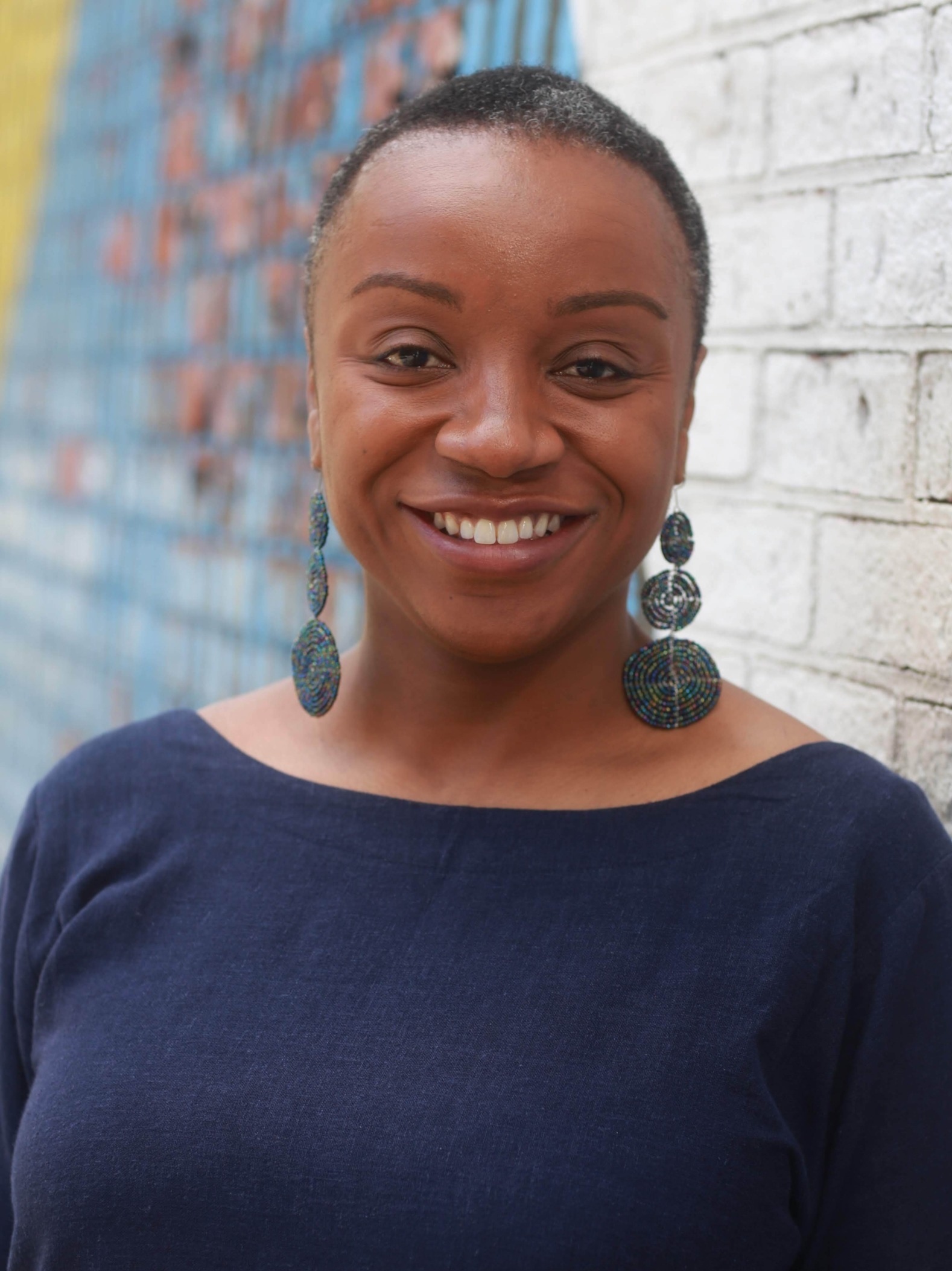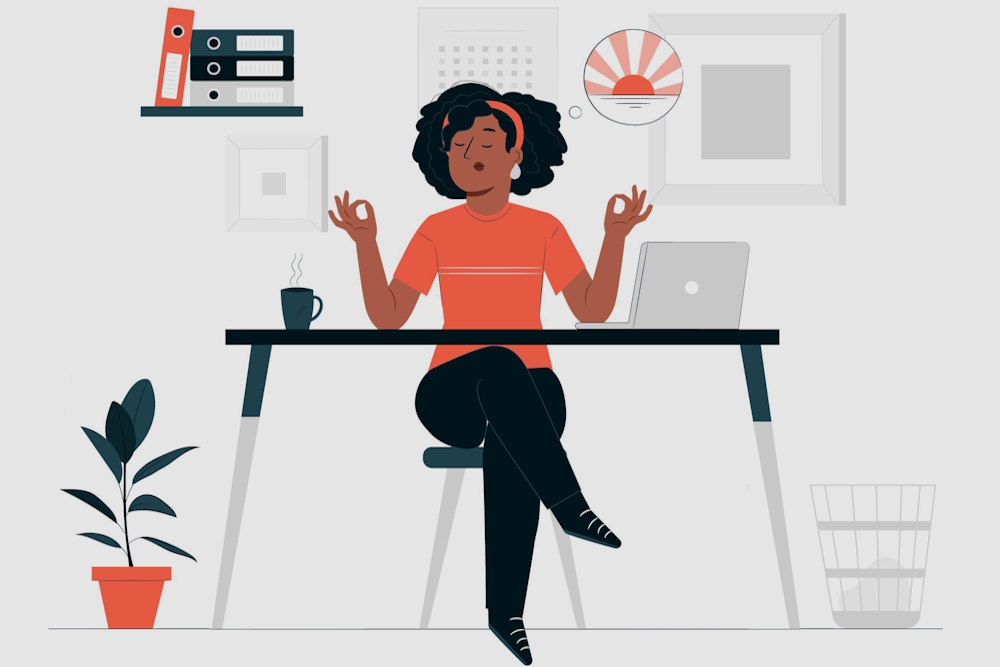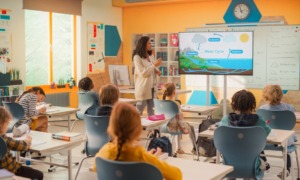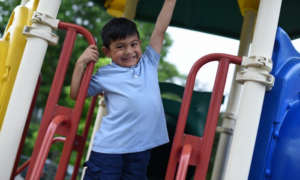On the umpteenth day that my middle schoolers and I were slogging through online learning, I introduced them to what I’d been doing to combat my pandemic-induced gloom: “Let’s get ready for meditation, y’all. Close your eyes. We’re going to breathe together.”
Breathing exercises had steadied me on my side of the screen and, sometimes, them on theirs during the pandemic. It had kept my demons at bay when my relentless monitoring of skyrocketing COVID-19 infection rates led me to lock myself away in my second-floor apartment. Amid those frightening increases, I breathed and meditated before turning on the laptop that was my connection to a litany of classes, meetings and my students.

Courtesy of Abimbola Cole Kai-Lewis
Abimbola Cole Kai-Lewis
So, when New York City Mayor Eric Adams and Schools Chancellor David Banks in late June announced a mindfulness initiative for public schools, I was all in. Starting in September, kindergarten through 12th-grade students and staff across the five boroughs will commit to deep breathing for two to five minutes each day, an exercise intended to create a calming, supportive classroom environment. These mindfulness moments will be an extension of wellness programs for workers through our city government’s various departments and of the Yoga and Mindfulness Teacher Preparation Program, a partnership between the city’s schools and Yoga Alliance.
Some have applauded the coming mindfulness minutes. But critics have countered that it is far more important to spend classroom time improving reading, writing, arithmetic and other academic skills. In a New York Post opinion piece, public policy specialist Tim Hoefer, president and CEO of the Empire Center for Public Policy, said the mayor should redirect his attention to surging rates of student absenteeism; raising student proficiency in English language arts and math; teaching phonics to improve reading; coming up with better strategies addressing dyslexia, which the mayor has spotlighted. In his day, he has publicly said, he was among New York City public school students struggling to learn, while having dyslexia.
As a teacher with 12 years of classroom experience, I do believe there are benefits to mindfulness and daily breathwork. I agree with Mayor Adams that mindfulness will ultimately help with the “skills [we] need as [we] move through life.”
I’m convinced of this because of what my middle school students endured during the pandemic — while I, their teacher, contended with some of the greatest challenges of my career. Handling those challenges required skills that no one, in all of my years of undergraduate and graduate study, had taught me. The abrupt shift from in-person to virtual and, then, hybrid instruction posed numerous obstacles. Too many students lacked wi-fi access. They struggled with broken laptops, tablets and smartphones — and sometimes had none of those essential devices.
Quieting the sounds of sirens, and restless minds
Some students had a hard time waking up on school day mornings. They confessed to me that all they wanted to do was sleep. As New York City became this nation’s epicenter for COVID, petrified parents decided not to let their children go outside to play and get fresh air. Students were homebound for days and weeks at a time. Some students grieved the deaths of parents and other relatives. They were depressed, anxious, lonely. They struggled to learn, with ambulance sirens as our soundtrack, frequently blaring through their homes and mine and interrupting our virtual classes.
COVID deaths in my family and church network left me with a staggering sadness. Eventually, to avoid passing the refrigerated morgue truck parked outside of an overextended hospital near me, I reduced my time outdoors, eliminating the 20-minute walk to a local grocery store. My physical activity was relegated to traipsing around my apartment and, some days, I did not exceed a few hundred steps.
Already struggling with debilitating osteoarthritis that limited my mobility, I packed on some pounds. Trying not to surrender to that, I bought a yoga mat, blocks and a membership to join Peloton’s team of yogis, virtually, and to access the company’s online meditation classes. When we returned to the classroom, yoga and meditation laid a foundation for the daily stillness and quietude that my students and I committed to practicing together. Before beginning our daily lessons, we placed a “meditation in progress” sign on the classroom door, shut off the lights and tuned in to a virtual Peloton class on meditating.
“Close your eyes, and you can put your heads on your desks,” I’d say to them and to the administrators, staff and teachers who sometimes joined us.
Mayor Adams’ mindfulness plan will not instantly lessen the pandemic’s lingering effects — even to this day — on students. It will not reverse the absenteeism or academic deficiencies of so many of our kids.
The academic interventions and targeted instruction that critics cite are much needed. I hope more of that does happen. I also firmly believe that pairing a few minutes of each school day just to breathe, center ourselves and focus, also will bring about some needed change.
***
Ethnomusicologist Abimbola Cole Kai-Lewis is a New York City school teacher who also has taught at the City University of New York.
































